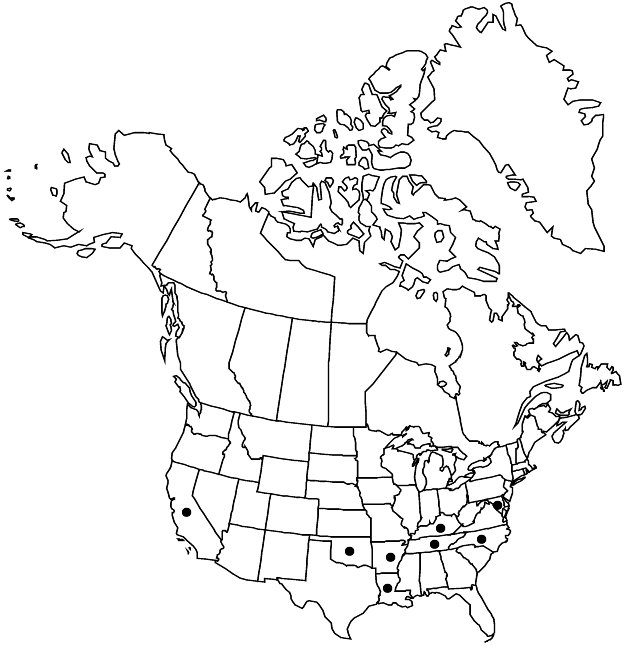Difference between revisions of "Stellaria neglecta"
in M. J. Bluff et al., Comp. Fl. German. 1: 560. 1825.
FNA>Volume Importer |
imported>Volume Importer |
||
| (5 intermediate revisions by 2 users not shown) | |||
| Line 1: | Line 1: | ||
{{Treatment/ID | {{Treatment/ID | ||
|accepted_name=Stellaria neglecta | |accepted_name=Stellaria neglecta | ||
| − | |accepted_authority=Weihe | + | |accepted_authority=Weihe |
|publications={{Treatment/Publication | |publications={{Treatment/Publication | ||
|title=in M. J. Bluff et al., Comp. Fl. German. | |title=in M. J. Bluff et al., Comp. Fl. German. | ||
| Line 8: | Line 8: | ||
}} | }} | ||
|common_names=Greater chickweed | |common_names=Greater chickweed | ||
| + | |special_status={{Treatment/ID/Special_status | ||
| + | |code=I | ||
| + | |label=Introduced | ||
| + | }} | ||
|basionyms= | |basionyms= | ||
|synonyms={{Treatment/ID/Synonym | |synonyms={{Treatment/ID/Synonym | ||
|name=Alsine neglecta | |name=Alsine neglecta | ||
|authority=(Weihe) Á. Löve & D. Löve | |authority=(Weihe) Á. Löve & D. Löve | ||
| + | |rank=species | ||
}} {{Treatment/ID/Synonym | }} {{Treatment/ID/Synonym | ||
|name=Stellaria media subsp. neglecta | |name=Stellaria media subsp. neglecta | ||
|authority=(Weihe) Murbeck | |authority=(Weihe) Murbeck | ||
| + | |rank=subspecies | ||
}} | }} | ||
|hierarchy=Caryophyllaceae;Caryophyllaceae subfam. Alsinoideae;Stellaria;Stellaria neglecta | |hierarchy=Caryophyllaceae;Caryophyllaceae subfam. Alsinoideae;Stellaria;Stellaria neglecta | ||
| Line 30: | Line 36: | ||
|elevation=100-200 m | |elevation=100-200 m | ||
|distribution=Ark.;Calif.;Ky.;La.;Md.;N.C.;Okla.;Tenn.;Europe. | |distribution=Ark.;Calif.;Ky.;La.;Md.;N.C.;Okla.;Tenn.;Europe. | ||
| + | |introduced=true | ||
|discussion=<p>Formerly, <i>Stellaria neglecta</i> was rare in North America, but during the last ten to 15 years it has spread rapidly and become weedy. It is very like larger forms of <i>S. media</i> (see note under that species), but usually differs in having larger flowers, sepals, and seeds; having a larger number of stamens; and having seeds with acute conic tubercles. Flowers are self-compatible but usually are pollinated by flies.</p> | |discussion=<p>Formerly, <i>Stellaria neglecta</i> was rare in North America, but during the last ten to 15 years it has spread rapidly and become weedy. It is very like larger forms of <i>S. media</i> (see note under that species), but usually differs in having larger flowers, sepals, and seeds; having a larger number of stamens; and having seeds with acute conic tubercles. Flowers are self-compatible but usually are pollinated by flies.</p> | ||
|tables= | |tables= | ||
| Line 39: | Line 46: | ||
-->{{#Taxon: | -->{{#Taxon: | ||
name=Stellaria neglecta | name=Stellaria neglecta | ||
| − | + | |authority=Weihe | |
| − | |authority=Weihe | ||
|rank=species | |rank=species | ||
|parent rank=genus | |parent rank=genus | ||
| Line 54: | Line 60: | ||
|publication title=in M. J. Bluff et al., Comp. Fl. German. | |publication title=in M. J. Bluff et al., Comp. Fl. German. | ||
|publication year=1825 | |publication year=1825 | ||
| − | |special status= | + | |special status=Introduced |
| − | |source xml=https:// | + | |source xml=https://bitbucket.org/aafc-mbb/fna-data-curation/src/2e0870ddd59836b60bcf96646a41e87ea5a5943a/coarse_grained_fna_xml/V5/V5_228.xml |
|subfamily=Caryophyllaceae subfam. Alsinoideae | |subfamily=Caryophyllaceae subfam. Alsinoideae | ||
|genus=Stellaria | |genus=Stellaria | ||
Latest revision as of 22:09, 5 November 2020
Plants annual or winter annual, from slender taproot. Stems decumbent proximally, ascending distally, diffusely branched, 4-angled, to 80 cm, with single line of hairs along each internode. Leaves petiolate (proximal and those on sterile shoots) or sessile (distal and mid stem); blade ovate to broadly elliptic, 0.5–4 cm × 2–18 mm, base round to cuneate, margins entire with few cilia at base, thin, apex acute to short-acuminate, ± glabrous. Inflorescences terminal, 9–many-flowered cymes; bracts ovate to lanceolate, 3–25 mm, reduced distally, herbaceous, sparsely ciliate on margins and underside. Pedicels erect, often becoming deflexed, 5–40 mm, pubescence a single line of hairs. Flowers 5–7 mm diam.; sepals 5, veins obscure, lanceolate, 5–6.5 mm, margins narrow, membranous, apex acute, pubescent; petals 5 (rarely absent), 2–5 mm, shorter than or equaling sepals; stamens 8–10; styles 3, ascending, outwardly curved, 0.5–1 mm. Capsules green to straw colored, ovoid-oblong, 5–7 mm, ca. equaling sepals, apex obtuse, opening by 6 slightly recurved valves; caropohore absent. Seeds very dark brown when mature, round, 1.1–1.7 mm diam., tuberculate; tubercles conic, taller than broad, apex acute. 2n = 22.
Phenology: Flowering spring.
Habitat: Hedge banks, open woodlands, along streams, semishaded grassy places
Elevation: 100-200 m
Distribution

Introduced; Ark., Calif., Ky., La., Md., N.C., Okla., Tenn., Europe.
Discussion
Formerly, Stellaria neglecta was rare in North America, but during the last ten to 15 years it has spread rapidly and become weedy. It is very like larger forms of S. media (see note under that species), but usually differs in having larger flowers, sepals, and seeds; having a larger number of stamens; and having seeds with acute conic tubercles. Flowers are self-compatible but usually are pollinated by flies.
Selected References
None.